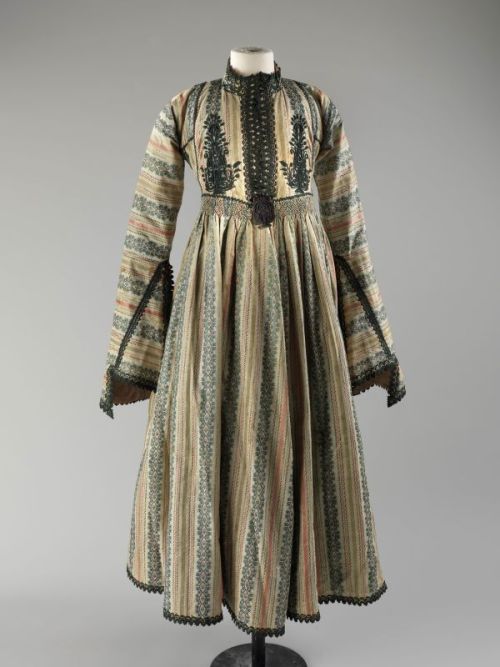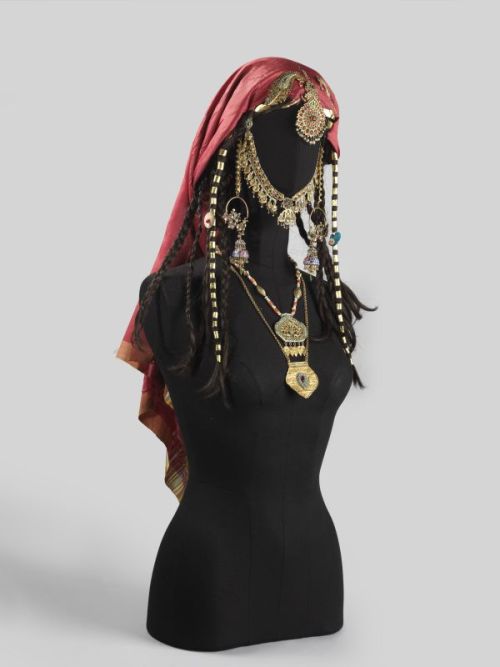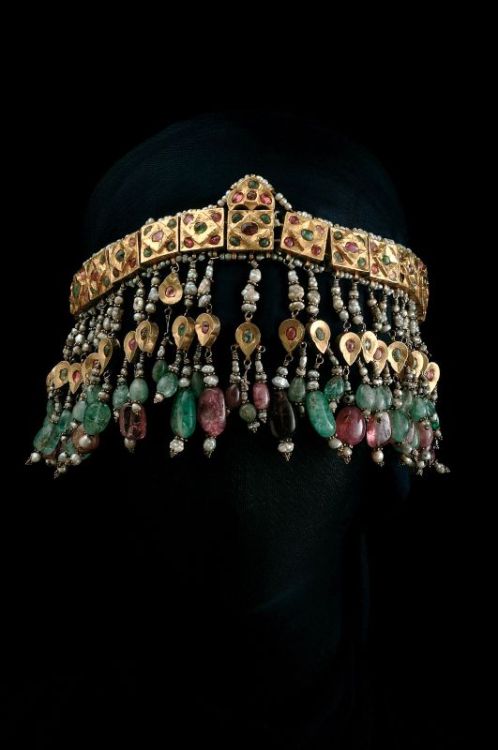#jewish clothing
Jewish woman’s dress from Ioannina, Greece
First half of the 19th century (?)
Silk-thread embroidery on silk brocade
Post link
The Jewelry of Jewish Brides in Herat, Afghanistan
Jewish brides in Herat wore gold jewelry in the Persian Qajar style, with painted enamel and precious stone inlay. This distinguished them from their Muslim counterparts, who wore only silver jewelry. Additional distinguishing features were the sequins and gold paper cutouts that adorned the Jewish bride’s forehead, matching to perfection her makeup and jewelry. Made by Muslim silversmiths, the jewels were imported from Mashhad, Iran. Their design reflects a combination of cultural influences – from India in the East, Russia and Central Asia in the North, and Iran in the West. Recurring motifs include the sun, birds, and almonds – all symbols of good luck.
Post link
Head ornament of a Jewish bride (balgak), Bukhara, Uzbekistan, late 19th century.
Before the wedding, well-to-do Bukharan Jewish families would invite a goldsmith to their house, where he would make the jewelry for the bride, living there until the dowry preparations were completed. The jewelry was made of gold, colorful semiprecious stones, and pearls, some local and others imported, mainly from Russia. The jewelry remained the bride’s private property throughout her life and was bequeathed to her daughters upon her death. This forehead ornament is a central component in the magnificent set of jewelry worn by Jewish women for holidays and ceremonies.
Post link



